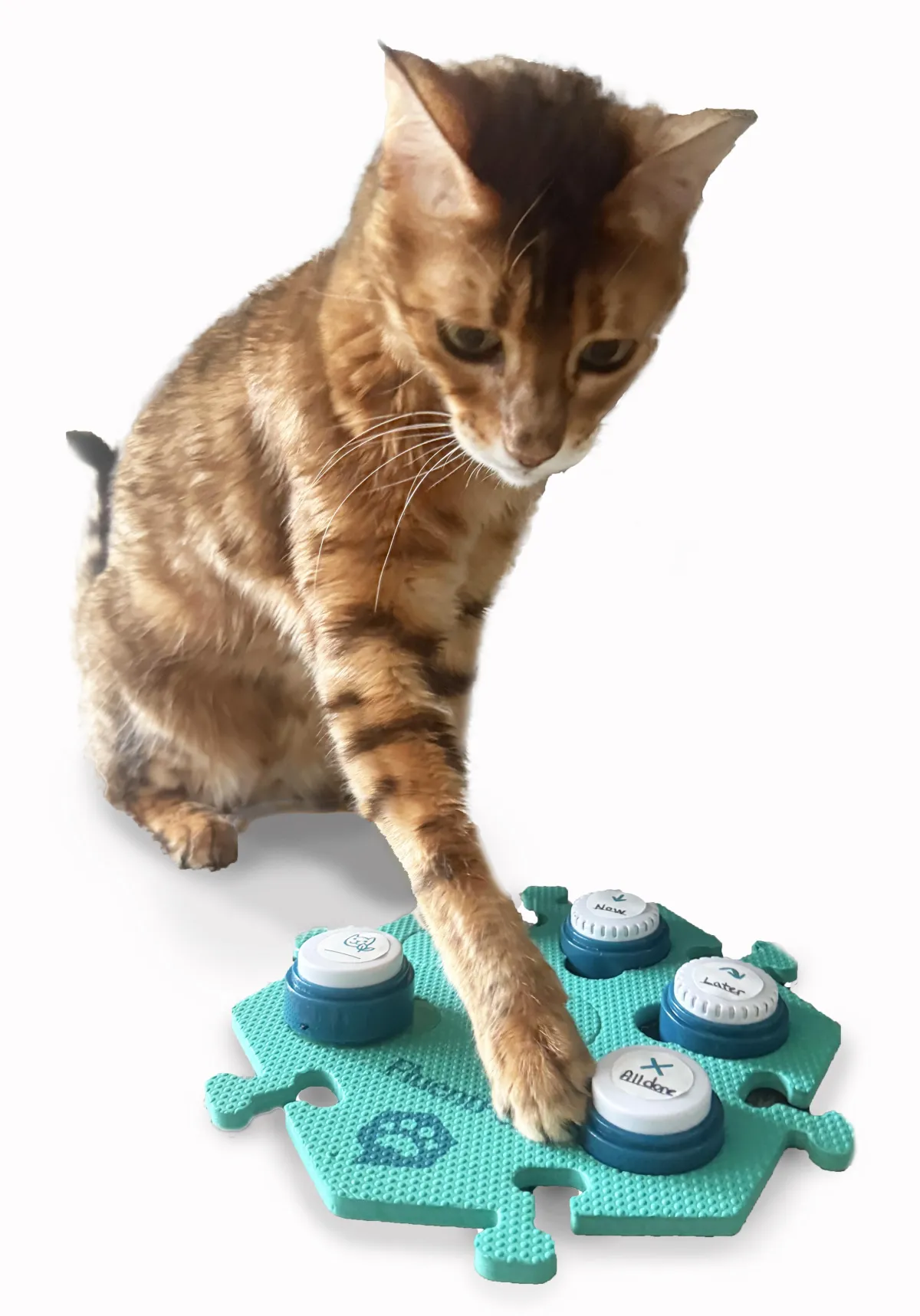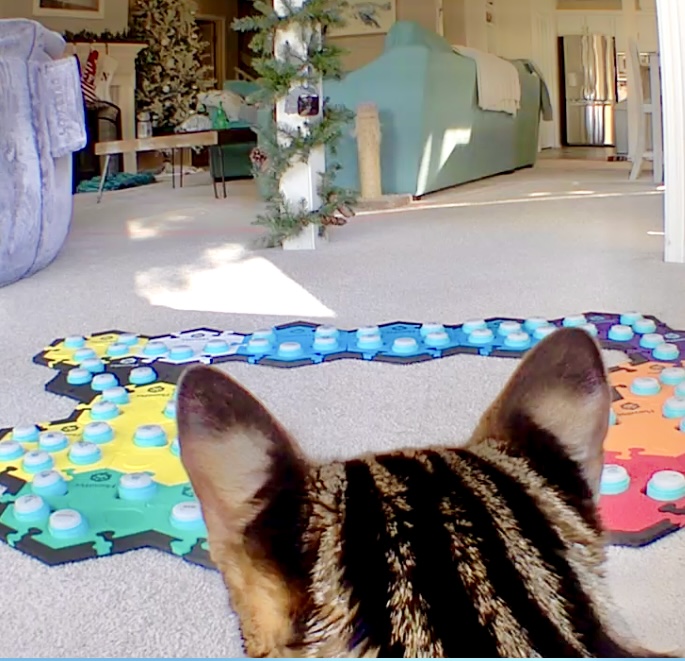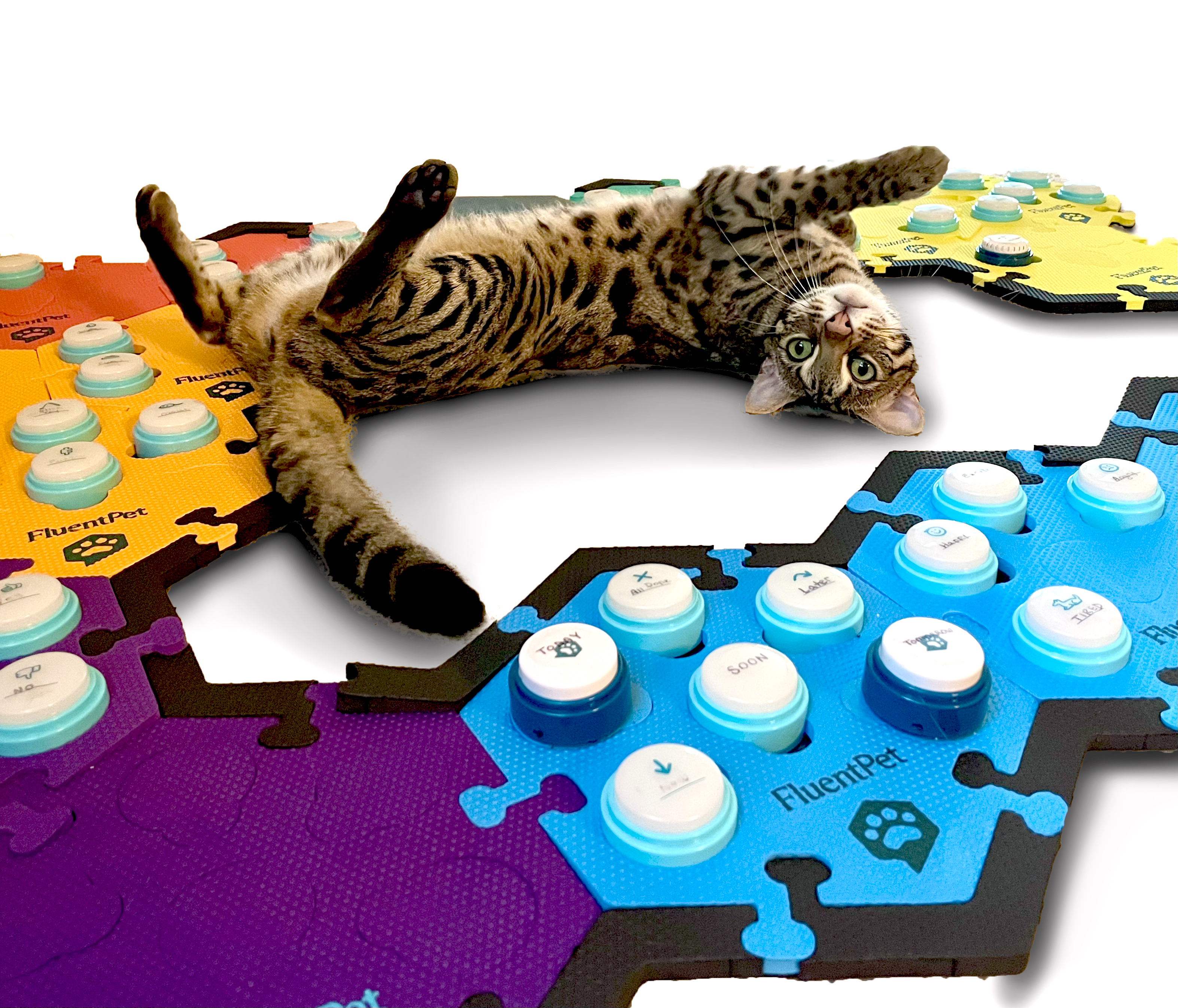
Tips for Teaching Speech Buttons in a Multipet Household
“Does Fiki press buttons too?”
The answer is yes, he does.
But here’s the thing—because Flounder always has so much to say, Fiki doesn’t get as much time with the soundboard. And honestly? He seems perfectly fine with that. Fiki has never been the type to feel like he needs to talk constantly. He’s more of a “say it when it matters” kind of guy.
Still, teaching buttons in a multi-pet household comes with its own set of challenges, joys, and surprises, and I want to share some of what I’ve learned.
Is There an Age Limit for Teaching Buttons?
I also get asked this a lot, and my answer is simple:
The only limits pets have are the limits we assign to them as their humans.
Fiki didn’t start learning speech buttons until he was almost 11 years old. And here’s the twist—he actually picked up a lot of the words faster than Flounder.
Why? Because he’d spent over a decade hearing those words in context, building associations without even realizing it. Once the buttons were introduced, he already had the mental “dictionary” ready to go. He just needed the physical tool to say them.
So no—there’s no expiration date on learning.

Why I Suggest Starting with One “Focused Learner”
If you’re teaching speech buttons in a multi-pet household, my biggest piece of advice is this:
Start with one pet.
There are two reasons for this:
It’s less overwhelming for you.
Teaching buttons should be a positive experience, not a stressful one. The main purpose is to enhance your bond with your pets—not to feel like you’re running a chaotic classroom.Other pets are always watching.
Just because you’re focused on one learner doesn’t mean the others aren’t picking things up. Pets are incredible observers. They watch your interactions, hear the same words in context, and often figure things out long before you formally teach them.
In fact, some pets learn better by watching their sibling learn first.
Do Pets Need Their Own Soundboards?
This is one of those “it depends” questions. The answer really comes down to:
Your pets’ personalities
Your space
Your training goals
In my home, Flounder has the big board, which Fiki is welcome to use. But because Flounder tends to occupy it (a lot), Fiki also has a small board with his most important words. That way, if the big board is in heavy use (which it usually is), he still has an outlet for the things that matter to him.
This setup works perfectly for us, but I know households where each pet has their own full-size board and households where everyone shares one. The key is making sure all pets feel like they have a voice—whether that’s through a shared board, personal boards, or a combination.

The Challenges and Rewards
Teaching buttons in a multi-pet household isn’t always smooth sailing.
You might run into:
Board traffic jams (everyone wants to talk at once)
Button hogging (ahem… Flounder)
Disagreements over words (yes, pets can disagree!)
But the rewards far outweigh the challenges. You’re not just teaching a skill—you’re giving your pets agency. You’re showing them that their thoughts, needs, and feelings matter enough for you to listen.
And when you see that lightbulb moment—that click where they realize, “I can say something, and you’ll understand”—it’s priceless.
Bottom line:
Start with one learner. Let the others observe. Give them the tools they need when they’re ready. And most of all, enjoy the process—because the bond you’ll build is worth every moment.
Frequently Asked Questions
Can pets learn to use buttons designated specifically for them?
Yes, pets can learn to use buttons designated for them by associating specific words or phrases with their individual buttons. This tailored approach enhances communication and ensures that each pet understands and engages with their own designated speech button effectively.
What should I do if one pet dominates the speech buttons?
If one pet is monopolizing the speech buttons, implement turn-taking protocols. Use positive reinforcement to reward sharing behaviors and ensure all pets have equal access. Additionally, consider using separate buttons for each pet to reduce competition and promote cooperative interactions.
Are there signs a pet is feeling left out or overwhelmed during training?
Pets may show signs of feeling left out or overwhelmed during training, such as excessive vocalization, seeking attention from you, or displaying anxious behaviors like pacing. Observing their body language and interactions with other pets can provide further insight into their emotional state.
